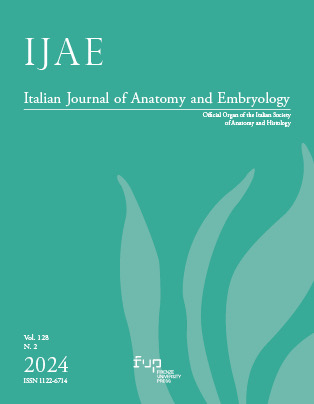Published 2024-12-31
Keywords
- Coronary vessels,
- Cholinergic nerve fibres (CNF),
- Acetylcholinesterase,
- Choline-acetyl-transferase,
- Histochemistry
- Age-related changes ...More
How to Cite
Copyright (c) 2024 Antonello Ciccarelli, Flavio Forte, Ivano Pindinello , Luigi Cofone, Francesco M. Galassi, Francesco Circosta, Veronica Papa, Samanta Taurone

This work is licensed under a Creative Commons Attribution 4.0 International License.
Abstract
Background. Cholinergic nerve fibres were studied in the human coronary vascular tree by means of acetylcholinesterase staining and choline acetyltransferase activities on autopsy samples of coronary vessels (arteries, veins, and micro-vessels). Methods. Samples of human coronary vessels were harvested in younger and older subjects. Samples were exposed to the enzymatic and or immune staining for acetylcholinesterase and choline acetyltransferase, two enzymes linked to the metabolism of acetylcholine. The morphological data were subjected to the quantitative analysis of images and to the statistical analysis of data. Results. Both acetylcholinesterase and choline acetyltransferase activities are localised in the human coronary vessels. Structures resembling cholinergic nerve fibres are located in the extra-parenchymal and intra-parenchymal branches of these vessels. Discussion and Conclusions. The quantitative analysis of images and statistical analysis of data demonstrate that the cholinergic innervation of coronary vessels (especially the extra-parenchymal branches) is well represented. Moreover, in older subjects both the enzymes are strongly decreased. The extra- and intraparenchymal branches of the human coronary arteries and veins are provided with cholinergic nerve fibres, which could control the efferent sensitive pathways and the autonomic nerve fibres of the coronary vascular tree.

